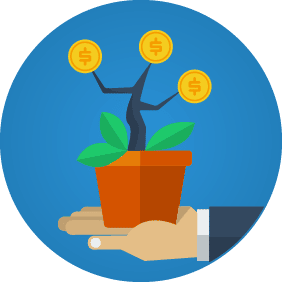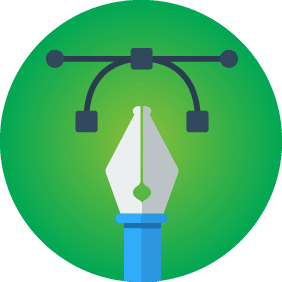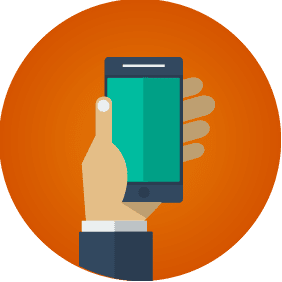Facebook is a busy social media network with 1 billion (and counting) members logging in almost every day, for more than 4 hours per day. According to The State of Inbound Marketing Report from HubSpot[1], only 24% of business owners thought Facebook was important for their businesses while the percentage of business owners who consider Facebook to be indispensable for their businesses rose to 42% in 2012 – a whopping 75% increase.
Social media, overall, has at least 100% higher lead-to-close ratio than traditional outbound marketing according to the same source. The report further reveals that B2C companies acquired 77% of their customers from Facebook alone (while the percentage sits at 43% for B2B companies).

Facebook is a behemoth for social just as Google is for search.
Businesses of all sizes are now scrambling to make use of the humongous potential for promoting products, brands, and services on platforms like Facebook. Yet, businesses struggle with lead generation, increased exposure, and promotions on Facebook.
Here are 6 ways to promote your Facebook:
- 1. Start with general engagement: products and services come later
Go back to how business was done earlier, before and during the industrial revolution. Purchases stem from relationships. Today, social media networks like Facebook hurled us back into the same realm. Profitability through effective promotions now depends on the strength of relationships with your network on social media. To get there, you’d need to focus on value-added engagement much more than you’d generally focus on promoting your products and services.
- 2. Use Facebook events to your advantage
Facebook has an “events” feature and it doesn’t always have to end up being someone’s birthday (unless it’s a fan’s birthday, which you could use to your advantage).
Use events (actual in-person events or virtual ones) to spread more information relating to your business niche. Go out to “educate” through your events rather than blatantly sell. Share secrets about your products, showcase new products, reveal other ways to use your products, or hold events to promote a non-profit cause. Events are a great way to build trust, engage, and to give something back to the community at large.
- 3. Facebook tabs play proxy-landing pages
Facebook has a tabbed layout with each tab leading to a different page within your Facebook Fan Page (it could be a store front too, and that’s discussed below). Creating tabs is similar to creating landing pages within Facebook itself, dedicated to your Facebook fans. So, you could have a tab for a mini-store, a tab for your newsletter sign-up, and another tab for videos. Use tabs as “call to action” pages by offering something valuable in return for a “like”. You may also use tabs for running contests, generating leads, showcasing products, or to share content.
On your Facebook Fan page default view for users, you may choose to display any of the tabs (from the settings panel). The default, however, is the Facebook fan page timeline.
- 4. Bridge Facebook with your web properties
It’d be obvious by now, but try to link your web properties (the content you share, other websites you own, your blog, and even other social media networks) back to your Facebook fan page and vice-versa. On the other hand, never auto-post on your Facebook fan page.
According to HubSpot[2], auto-posting to your Facebook Fan page reduces “likes” and “comments” by at least 70%. For instance, Twitter’s integration with Facebook Fan page automatically posts your tweets to your Fan page. Go ahead and severe that link because it hurts your fan page effectiveness.
Start with your blog and make sure you have Facebook like buttons and “like box” embedded on the sidebar or other prominent places on your web properties to bridge Facebook with your regular website, eCommerce store, or blog.
- 5. Leverage Facebook-centric stores
Many eCommerce solution providers and social media applications allow you to host a mini-store right off a tab on your Facebook fan page. Although direct selling isn’t such a great idea on Facebook, just being present on Facebook (thanks to its immense exposure) can’t hurt. On your Facebook store itself, be sure to embed “Like”, “Send”, “recommend” buttons that Facebook provides on every product image and other pages because it’s on Facebook that users are most likely to share your content.
- 6. Reward Loyal Fans
Many Facebook fan pages (with or without product/service stores) are barren. You’d see more fan activity on some popular brand pages than the total number of responses or comments from the actual brand itself. Always respond to comments, questions, and links posted on your Fan Page – and that’s one part of the job. Go beyond normal engagement and reward your loyal, active, creative, or enthusiastic fans. Mention them, send them a free gift (even a copy of a digital report will do), or invite them for a beta test for a new product launch.
How are you going to use Facebook for promotions?
[1] HubSpot | State of Inbound Marketing Report 2012 http://blog.hubspot.com/blog/tabid/6307/bid/33571/12-Revealing-Marketing-Stats-About-Facebook-for-Business.aspx
[2] HubSpot | State of Inbound Marketing Report 2012 http://blog.hubspot.com/blog/tabid/6307/bid/33571/12-Revealing-Marketing-Stats-About-Facebook-for-Business.aspx
February 3, 2014









